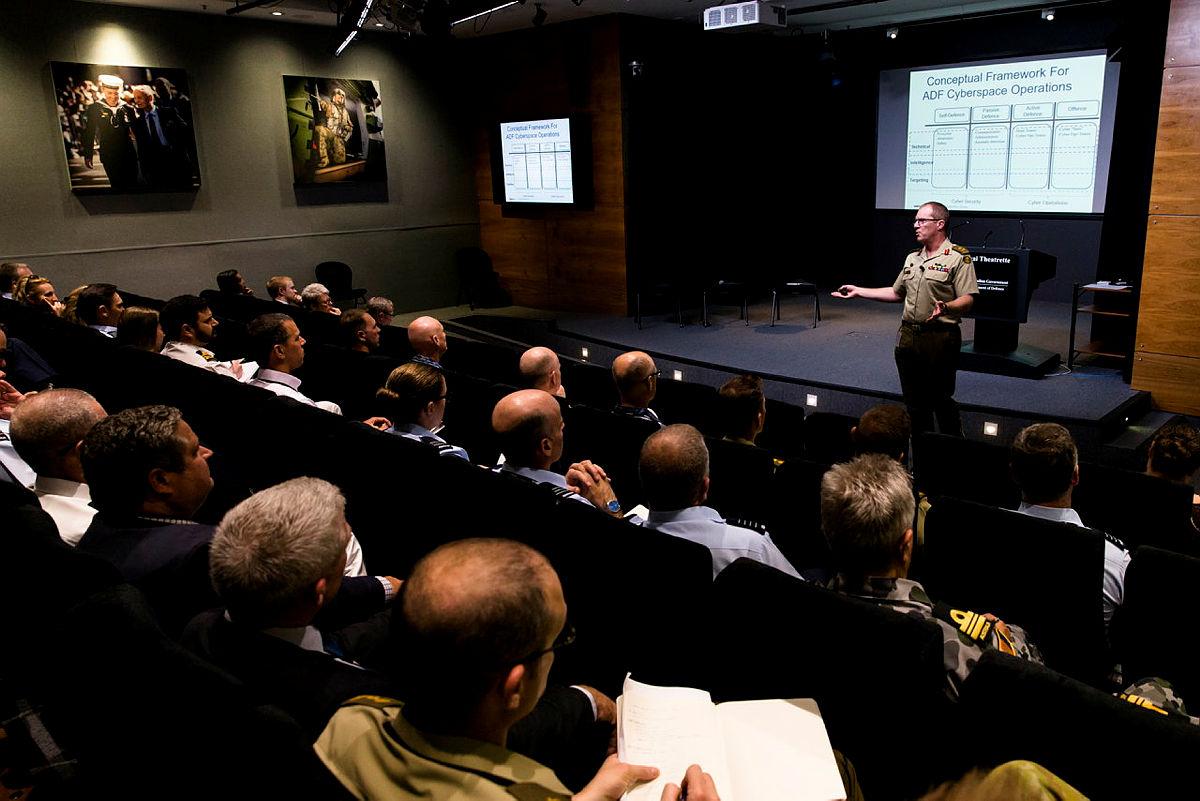
More than a decade ago, researcher Aaron Corn coined the term ‘Indigital revolution’ to describe the rapid take-up of technology across Indigenous Australia. Despite continued access issues, Indigenous Australians are highly technologically literate and reportedly use some social media platforms at higher rates than non-Indigenous Australians.
Despite that, there remains significant under-representation of Indigenous Australians in technology and STEM (science, technology, engineering and mathematics) careers, and across the country there’s a patchwork of education initiatives that attempt to increase pathways in the vocational and higher education systems. However, solutions often begin with deficits within communities—the government’s 2020 Closing the Gap report, for example, highlights the lack of maths and science skills.
In a conversation that starts from a different premise, Dion Devow, ASPI’s Indigenous engagement specialist, sat down with Major General Marcus Thompson (Ret’d) and Meg Thompson, ASPI’s first Indigenous research intern, to focus on solutions that highlight the unique perspectives and abilities of First Australians, and that see diversity as a strategic asset.
As noted by Dion, conventional views of literacy fail to account for the fact that in many communities Indigenous Australians are more literate than non-Indigenous Australians, speaking multiple languages and ‘reading’ the land and water in various ways.
Marcus’s career pathway took him to the top ranks of the Australian Defence Force—he retired as the inaugural head of information warfare in the Joint Operations Group. To understand how that became possible, he says, it’s necessary to understand that ‘the ADF is a training organisation. [It] has a core skill in taking someone out of school, off the street, and training that person with skills or a trade within the ADF.’
Marcus has long argued that working in cyber operations is about more than engineering and computer science and favours highlighting the work that can be done by arts graduates in STEM careers. Cyber capability is often strongly associated with ‘hoodie-wearing geeks tapping away at computers in dark rooms’, he notes. However, he says working in cybersecurity requires a diverse set of skills: ‘intelligence analysts, communications specialists, anthropologists, psychologists, people with legal expertise, people who can craft a message and communicate with leaders’.
The need for diverse skills was the thinking behind the ADF Cyber Gap Program, which was launched in mid-2020. The program aims to train people from diverse educational backgrounds in skills relating to cybersecurity, electronic warfare, information warfare and information operations.
‘The last thing we want is groupthink. And the more diverse views that can contribute to decision-making, the better’, Marcus says.
In other words, diversity in organisations can deliver competitive or strategic advantages. Diversity builds resilience by ensuring that many voices shape organisational capabilities and anticipate current and future needs.
When asked why a career in cybersecurity might appeal to young First Australians, Meg explained that her pathway to working in ASPI’s International Cyber Policy Centre involved reflecting on the importance of cybersecurity in areas that we take for granted. Behind many digital systems there are hidden political and economic issues.
Many Indigenous young people share videos on online platforms such as TikTok. This offers opportunities to share their culture, humour and politics. But those platforms also operate in a space defined by political questions, including how intellectual property is regulated, who has control over data, and how content is curated or even censored.
Questions of Indigenous justice are also increasingly relevant in the digital environment. Data or digital sovereignty—how data is controlled and owned by Indigenous communities—has become part of how communities are addressing their economic and social development.
There remain significant barriers to accessing technology in many parts of Australia, but there are also resilience and resourcefulness in communities. In our research at ASPI, we’ve found many examples of achievement by First Australians in technology (both new and old) across the country. Those examples include young Indigenous engineering students attending NASA’s jet propulsion lab in the US, Indigenous start-ups and eduTech companies exposing young people to coding.
When asked what she would say to young Indigenous Australians interested in a career in technology, Meg recommended engaging with community elders: ‘Talk to your elders and understand your culture and history—particularly because you need a sense of yourself; you need an identity within yourself in order to succeed.’
Indigenous elders are the backbone of communities and are the key to engaging communities and enabling young people to turn to non-traditional careers and pathways. In the Warlpiri community of central Australia, for example, Indigenous elders’ centrality to community is demonstrated in the principle of Ngapaji Ngapaji (‘You give, I give’). This principle captures ‘the obligation of elders to teach younger generations their traditional knowledge and the reciprocal obligation of the young to teach their elders how to use the technology to keep their traditions.’
A person’s sense of identity, particularly as a First Australian, needs to be strong to build resilience. This will provide the catalyst for a successful career.
Visit ASPI’s website to learn more about our IndigiCyber and Defence Program.